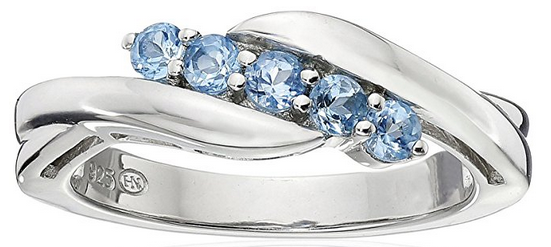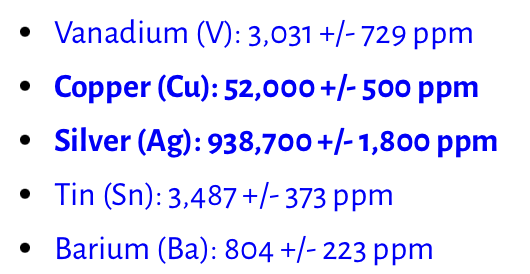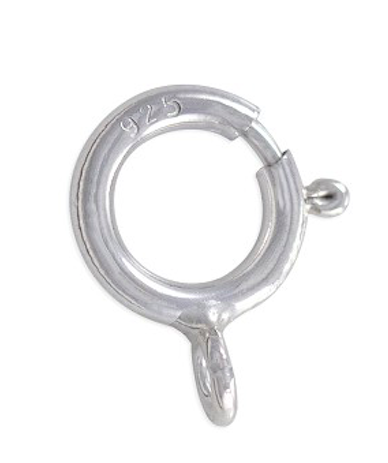#SaferChoices: How to choose jewelry that is Lead-free, Cadmium-free & otherwise safe from a toxicant perspective
For those new to the Lead Safe Mama website:
Tamara Rubin is a multiple-federal-award-winning independent advocate for childhood Lead poisoning prevention and consumer goods safety, and a documentary filmmaker. She is also a mother of Lead-poisoned children (two of her sons were acutely Lead-poisoned in 2005).
- Tamara owns and runs Lead Safe Mama, LLC — a community collaborative woman-owned small business for childhood Lead poisoning prevention and consumer goods safety.
- Since 2009, Tamara has been using XRF technology (a scientific testing method) using the exact instrumentation employed by the U.S. Consumer Product Safety Commission to test consumer goods for toxicants (specifically heavy metals — including Lead, Cadmium, Mercury, Antimony, and Arsenic).
- Since July of 2022, the work of Lead Safe Mama, LLC has been responsible for 5 product recalls (FDA and CPSC).
- All test results reported on this website are science-based, accurate, and replicable.
- Items that Lead Safe Mama, LLC reports on are tested multiple times to confirm the results published (for each component tested).
- Tamara’s work was featured in Consumer Reports Magazine in February 2023 (March 2023 print edition) and The Guardian in November 2023.
Additional Related Reading That may be of Interest:
- More Lead Safe Mama articles about Sterling Silver
- Articles about Silver Coins
- Articles about Silver Plate
- Articles about Jewelry
- Articles about Vintage Jewelry
- Articles about Brass Jewelry
- Articles about Costume Jewelry
- Articles about Faux Pearls
- Articles about Paparazzi Jewelry
- Articles about Avon Jewelry
- Articles about Mardi Gras Beads
- Articles about Crystal Jewelry
- Articles about Gold Jewelry (& Mercury Contamination)
- How to choose safer beads for children
This is an ad-free article.
To make a contribution that helps us keep our most widely-read articles ad-free, click here. Thank you.
Published: January 14, 2017
Updated: December 3, 2023
How to Make Safer Jewelry Choices
Given how much Lead (Mercury, Arsenic, and Cadmium, too!) there can be in older — and newer — jewelry (both in the metals and in the faux jewels), my recommendation for jewelry has always been to stick with pure solid Sterling Silver (meaning there is a “925” stamped somewhere on the item — see inside of the ring image featured above). For additional sparkle, stick with natural stones that don’t have to be expensive; safer natural stone options include amethyst, jade, malachite, garnet, and topaz.
In addition to Sterling Silver you may want to consider (for toxicant-free options):
-
- Titanium jewelry
- Wooden jewelry (unpainted)
- Stainless Steel jewelry
- Natural fiber fabrics (hemp, cotton, silk, etc.)
Section #1) What is Sterling Silver?
“925 Silver” (Sterling Silver) means an item is 925,000 parts per million silver (92.5% silver).
Much of the Silver with a 925 stamp (silver sold as “Sterling Silver” on which you can clearly see a tiny 925 stamped impression somewhere pressed into the metal of the piece) that I have tested since I started using XRF technology in 2009, has actually tested positive for Silver content at levels higher than 92.5%. “925-stamped” Sterling Silver items often actually test positive for silver at 940,000 ppm or a similar level in the range of 93% to 95%.
- As a result of my (fairly consistent!) findings from testing hundreds of examples of Sterling Silver items (from multiple countries of origin) since 2009, my understanding is the 92.5% standard is likely a minimum standard for Silver content in the jewelry industry, with 925 stamped items actually likely expected (by the industry) to be “at least” 92.5% Silver or higher.
- The remaining 5% to 7.5% in the mix of metal that makes up most Sterling Silver is generally Copper.
- 925 stamped Sterling Silver can also include a mix of other metals — and (in all of my experiencing testing Silver items) those other metals never include Lead.
Here’s an example of test results for a 925 stamped Silver item I tested
Click here to see why I don’t recommend gold jewelry.
Section #2) Is Antique Sterling Silver Safe?
Warning: Vintage and Antique “Sterling Silver” Can (& often does) Have Unsafe Levels of Lead (& other toxic metals)
Vintage/ antique Silver that I have tested (mostly from the late-1800s and earlier, but sometimes manufactured through dates as late as approximately 1920) has been as low as 800,000 ppm Silver (or 80% silver), and while they may be marked “Sterling,” those items often do test positive for unsafe levels of Lead.
- With 80% silver in vintage and antique items, this leaves 20% (or 200,000 ppm) to be made up of other metals.
- Based on my limited knowledge of the history of jewelry making, with antique cast silver items, the initial designs and casting were often done in Lead — since it was soft to sculpt; this process appears to leave some Lead in the mold and then the Lead from the original sculpted design contaminates the Silver content of the finished Sterling Silver item (be it a spoon, a hair brush, or a piece of Jewelry).
- The only time I have been particularly concerned about this is with antique baby rattles that may be marked or sold as Sterling Silver (but not “925” Sterling), and therefore may have trace Lead at levels that are considered unsafe for children by modern standards.
- Separately, some silver items can have Lead at the solder points holding components together. Sterling Silver baby cups are a primary concern for this Lead-contamination as the Lead is on the surface of an item used to feed a child (typically a child who is at an age that still engages in significant hand-to-mouth activity and can therefore be higher risk for Lead poisoning).
I strongly recommend avoiding both vintage and costume jewelry (including Sterling Silver items) —unless a piece bears the (indelible) “925” silver stamp.
Below, I have linked some good examples of (likely) genuine Sterling Silver #SaferChoices available today Amazon. I am sure you can find similar ones in your local jewelry stores, too! Please note: From an online listing on Amazon, it is often quite difficult to determine if an item being sold as “Sterling Silver” is actually 925 Sterling. Because of this, if you do shop on Amazon, please be careful which vendors you buy from and make sure not to buy anything “silver plate” — as that can often be silver plated brass, which can contain high levels of Lead (under plating that often wears off, even when an item is used as intended).
Section #3) Look out for FAKE 925 Sterling Silver
Is it “too cheap” or “too good to be true?” Then steer clear!
Silver is really affordable as it is. However, if things look like they are far too inexpensive to be Sterling, then they probably are not Sterling (and usually in such cases their product specification sections may be fairly sketchy/ non-specific). Here’s a link to an example of an item that was sold as 925 Silver and had ZERO silver content.
Section #4) Some good examples of REAL 925 Sterling Silver
Some of the links on this page may be affiliate links where a purchase made
after clicking will support this website without costing you extra!
The links below are just ideas and examples — I don’t necessarily own these particular pieces; I have bought most of my jewelry from local vendors and local artists (and I don’t have very much of it)!
To see more Lead Safe Mama articles with test results for Sterling Silver, click here.
After spending a good hour surfing Amazon for true solid 925 Sterling Silver pieces, I’m assuming this “Amazon Collection” line is the most legit. Unlike some of the other listings that come up when searching “sterling silver” on Amazon, the “Amazon Collection” prices are consistent with being genuine sterling silver. Many of the images clearly show the “925” mark, and the detailed product descriptions for this Amazon Collection are also pretty clear — so maybe this is a good place to start:
Prices & Links Current as of December 3, 2023
(I am sure you can find nicer things at better prices from your local shop, so please just consider these as examples!)
- Some Sterling Silver drop earrings: $34.70
- Some Sterling Silver hoops: $34.80
- A Sterling Silver bracelet: $28.80
- A Sterling Silver heart-shaped locket: $60.00
- A Sterling Silver ring with blue topaz (pictured): $43.20
Happy shopping, and as always, please let me know if you have any questions. I will do my best to answer questions personally as soon as I have a moment (which is not always possible because I have disabled/ Lead-poisoned kiddos underfoot — but I try)!
Sincerely,
Tamara Rubin
Owner — Lead Safe Mama, LLC
#LeadSafeMama
Affiliate link disclosure: If you purchase something after clicking on one of our affilIate links Lead Safe Mama, LLC may receive a small percentage of what you spend at no extra cost to you.
Never Miss an Important Article Again!
Join our Email List












What about platinum? Does it pose any risks? Thanks for all your work!
Also wondering about this as my wedding set is platinum. I’m allergic to gold and I thought platinum was a safe choice (ugh!)
I would love to test some of the jewelry findings I have purchased on eBay and Etsy. Would the swabs work for this if I nick the piece if it is plated/and even if not? Thanks for all the information!
The swabs will not work on most jewelry findings. Sorry! Plus that can get pretty expensive too!
So these at home lead testing kits don’t work on jewelry?
They do not.
T
Can you recommend any professional labs to get jewelry tested for lead, cadmium, and mercury?
What about gold filled jewelry?
Thanks, Tamara…that’s disappointing. Sure can’t afford one of those meters either but would love to have one. Any other suggestions for testing jewelry?
Nope – not economically. You can go to a local jeweler. They have some reactive agent testing methodologies for certain metals, but they can’t always detect contaminants.
What about the gold plated Sterling silver? Are there any safe yellow jewelry options (I don’t like silver)?
I have not tested enough gold plated sterling to draw a conclusion. Gold often has quite a bit more contaminants than silver, so in general I would steer clear. If you like the gold color you could look for a high quality high copper-content lead-free brass, I have seen quite a few examples of that available in jewelry and other applications.
How do we know it is lead-free brass? Would you be able to add some gold-tone jewelry that you have tested as safe to your amazon affiliate links? I would definitely purchase.
Thanks,
I would never trust any gold-tone jewelry. Sorry. I don’t have any I can recommend.
T
Tamara,
Most of the sterling silver that I have found has cubic zirconia and is plated with rhodium. What are your thoughts on cubic zirconia, but most importantly on rhodium plating?
Hmmm – then it shouldn’t be labeled Sterling Silver (or 925). Is it? I haven’t tested many things with rhodium, so cannot weigh in on that.
Hi Tamera, Thank you for all this information. I have been looking at some sterling silver jewelry and was also wondering about the rhodium stated in some items as covering the sterling silver to prevent tarnishing. Then I just found you had this link on jewelry with some recommendations. One of them, the blue Topaz ring, does state in the description on Amazon that it has rhodium coating, so I am wondering whether or not to trust it, as I don’t think you have tested that one.
Also, do you have any links to titanium jewelry you might have tested or would assume safe, earrings in particular. Thank you.
so you are saying you would never hang onto vintage jewelry at all? thank you so much for all you do.
Hi “a”!
I have no vintage costume jewelry. This is saying a lot because I used to have an enormous collection (since I have a background in off-broadway costume design, from when I was in college in New York in the 1980s – and worked on lots of period pieces so came across a lot in my travels and my work and started collecting it!)
Tamara
Can older platinum items have lead if they are from a reputable jeweler? I have a set that was my mom’s made in the 1980s. Also, if you take the diamonds out of antique (like 1930s) gold settings and put them in modern settings would that resolve the issue?
I don’t buy a lot of jewelry but when I do I opt for sterling silver (after reading your post). However, I often see the warning “not intended for use by children under 12 (?) Years old” on jewelry that are marked as “sterling silver” and I steer away from them out of caution. Do you know why sterling silver would have that warning? Thanks!
I’ve developed a really bad rash from wearing my Fitbit inspire which has a rubber like band. I’ve seen many images with people with the same issue. I’m wondering if stainless steel would be a better choice than leather for a replacement.
Hi Dawn!
Thanks for commenting!
It really depends on your allergies / sensitivities. Leather can be tanned with Chromium (and sometimes Lead); stainless steel has high levels of nickel and chromium sometimes. Titanium always seems to be a good choice if that is an option. I don’t know anything about Fitbits or what the options are – so I cannot advise on that product specifically.
Here’s a post about stainless steel that you might find helpful: https://tamararubin.com/2018/07/asktamara-what-is-stainless-steel/
Tamara
Tamara, I have some bakelite bracelets and am wondering is they contain toxins?
Tamara, can you tell me if jewelry containing lead is allowed to be advertised as lead free? Meaning if it’s under a certain amount they can claim it’s lead free. Thanks
To pierce your ears, many places will only use 14K gold posts. are you saying these are bad? And you have to leave them in your ear for up to a year to ensure the hole stays open. Let me know, because I guess I can switch out the gold with 925 silver after I walk out of the store.
Thanks Tamara!
Tamara, what about niobium? I see niobium earring hooks being touted as hypoallergenic. Is it lead-free?
What about other silverplate, esp. flatware and trays? I have some in great (nearly perfect) condition from late 1980s, & some in “meh” condition (original owner put it into dishwasher) from late 1970s.
Silverplate is mentioned above. If you put silverplate in the search bar at the top of the website you will see several examples with test results as well.
Tamara
I did search, but didn’t see info on silverplate flatware in particular; found lots of info on sterling & stainless flatware, & a silverplate wine coaster with high lead. I have lots of silverplate trays & items from excellent to not-so-great condition; are you saying that all silverplate is suspect (even if it’s in good condition) b/c we don’t know what’s in the base material? Thx.
Yes – the examples on the site are examples of the range of possible test results – some ore quite high
I imagine heavy silverplate trays are more likely to have lead than are lightweight ones, based on what your site says about companies adding lead for that heavy, “luxury” feel. Esp. for flatware, is the leaching/risk somewhat condition-related (great condition = less risk; poor condition = high risk), b/c of base metals becoming exposed over time? I’ll definitely part with all worn silverplate, but my other set is like new so I’m hoping it’s OK (maybe not to hand down someday, but hopefully safe while it’s in great shape)?
Have you ever tested any of the jewelry, thinking especially of earrings, that says for sensitive ears or nickle free? Wondering how that tests?
Hi, Tamara. Do you have an article on platinum and/or palladium? I have a severe nickel allergy so have generally stuck to those metals and some rose gold (gold, copper, silver, zinc). I don’t know enough about the platinum and palladium (can’t remember the alloy used but no nickel) to know if those could contain harmful metals. Thanks!
I don’t have an article but some of the platinum I have tested has also been positive for Mercury.
Tamara, have you tested any moissanite jewelry? I was told that moissanite is lab-made but doesn’t contain lead. I’m suspicious of that, though. I was told that moissanite is extremely rare to occur in nature, so the vast majority of it in jewelry was made in a laboratory.
I have not heard of this – I will do some googling.
Hi Tamara,
I have read because there are no regulations caping the heavy metals on adult jewellery that children should not wear them. But the 925 sterling silver should be ok for children?